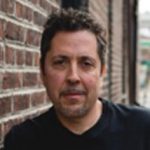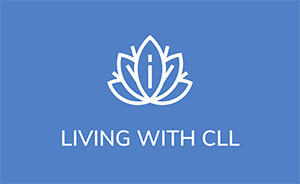

Introduction by Brian Koffman, MD
 Glenn Sabin has well-documented CLL that required treatment, has refused chemo-immunotherapy and has knocked back his disease not once, but twice with an aggressive multi-part response to his cancer with a deeply healthy life style.
Glenn Sabin has well-documented CLL that required treatment, has refused chemo-immunotherapy and has knocked back his disease not once, but twice with an aggressive multi-part response to his cancer with a deeply healthy life style.
As he rightly points out in his remarkable book, n of 1 (see: https://glennsabin.com) that outlines his cancer journey, his story is his story and he is not suggesting what worked for him will do the same for anyone else.
Neither are we.
However Glenn does offer living proof of the importance of being actively involved in your treatment, a basic principle of the CLL Society.
Glenn has kindly share one chapter from n of 1 to give you a sense of the whole book. In another article in this issue of The CLL Tribune, you will find a review of the book written by another CLL patient.
Glenn Sabin’s Introduction to Chapter 28 of n of 1:
During my cancer journey I have gone to great lengths to retain control over certain areas true to my personality and nature.
One example is how I have never worn a gown when getting scans or X-rays. As long as no metal was in my clothing, zippers and such, all was good; and I didn’t need to worry about flashing anyone my tush.
Even when hospitalized I have quickly changed from the provided gown to comfy workout clothes, which is my attire of choice.
In chapter 28 of my new book, n of 1, I tell a story of maintaining control—my brand of maintaining control—when at an extremely low point. I’ve shared the entirety of this short chapter that follows.
♦♦♦
There was a window in my room. Through it I could see a blue sky and a few fluffy clouds. Outside waited a perfect July day. And here I was cooped up in a cold, clinical setting, with broad-spectrum antibiotics dripping into my vein. Ill though I was, I desperately needed a change of scenery. A bit of “nature therapy.”
I slid my legs over the edge of the bed, stood up, and grabbing the IV pole, I slowly walked to the door of my room. My legs felt a little weak. But since I didn’t fall over, I kept going, out into the hospital hallway.
Once I got to the end of the hallway I felt pretty good. I wasn’t lightheaded or anything, so I headed back in the other direction to extend the walk. I paced around, walking the halls. After walking for maybe 10 minutes, I had seen everything there was to see in my ward, so I returned to my room and got back in bed.
But I couldn’t stay there. I stood up again, but this time I went to the window. I looked down. I could see the manicured grounds surrounding the hospital, traffic flowing along MacArthur Boulevard, and a line of trees across the street. Beyond those trees, but invisible to me, lay the Potomac River.
In fact, out there lay the entire world, and a dose of the world was exactly the medicine I needed. I called the nurse. She arrived promptly, and I told her I needed some fresh air. She crossed her arms, and dutifully explained that the doctors still didn’t know what was going on with me, and I was still running a low-grade fever, so an excursion was out of the question.
I felt a pang of remorse, because I had put her in an awkward situation. But my life was at stake, and what I needed at that moment was a dose of outdoors. I asked the nurse to close the door to my room. “Look,” I said, “I am not asking for your permission, nor am I discharging myself. Here’s the deal: I am leaving the hospital building for 45 minutes, but will stay on the grounds. You did not give me permission, but you know where I am. See you in a bit.” And with that, I waited for the nurse to leave, grabbed my sunglasses and IV pole, and headed towards the elevator.
I was wearing street clothes, or more accurately loose workout clothes. I hated the way that wearing hospital clothes evaporated my sense of control. To this day, I never wear a hospital gown, even when getting scans as an outpatient.
I wandered the verdant grounds, exploring, with no particular destination. Eventually I came upon a bench and sat down. The sun on my face and arms felt amazing. Birds chirped on branches above me. Even the suburban cacophony of car horns and trucks rumbling past sounded cheerful, almost musical. The earthy smells and the butterflies flitting around the flowers filled me with joy.
A new energy flowed into me, and I rose to my feet. Rolling the IV pole ahead of me, I left the hospital grounds. Once I’d made my way to MacArthur Boulevard, I felt a guilty glee. And I felt life flowing through my veins again.
I wanted to live.
I would live. If the doctors couldn’t figure out what I needed, I would have to figure it out myself.
After about 30 minutes wandering the neighborhood, I headed back to the hospital. I passed my nurse in the hallway outside my room. She gave me a nod, and a discernible smile. Once back in bed I realized that I was tired, but pleasantly so. I fell into a deep sleep.
Used with permission from Glenn Sabin. Copyright © 2016 by FON Therapeutics, Inc. All Rights Reserved.
Glenn Sabin lives in the Washington, D.C. area with his wife Linda, sons Miles and Jared, and mini schnauzer Leo. He is founder of FON Consulting, a business development firm dedicated to advancing integrative medicine as the new standard of care. Sabin writes and speaks about integrative medicine and cancer prevention.
Dr. Brian Koffman, a well-known doctor, educator and clinical professor turned patient has dedicated himself to teaching and helping the CLL community since his diagnosis in 2005. He serves as the unpaid medical director of the CLL Society Inc.
Originally published in The CLL Tribune Q1 2017.



